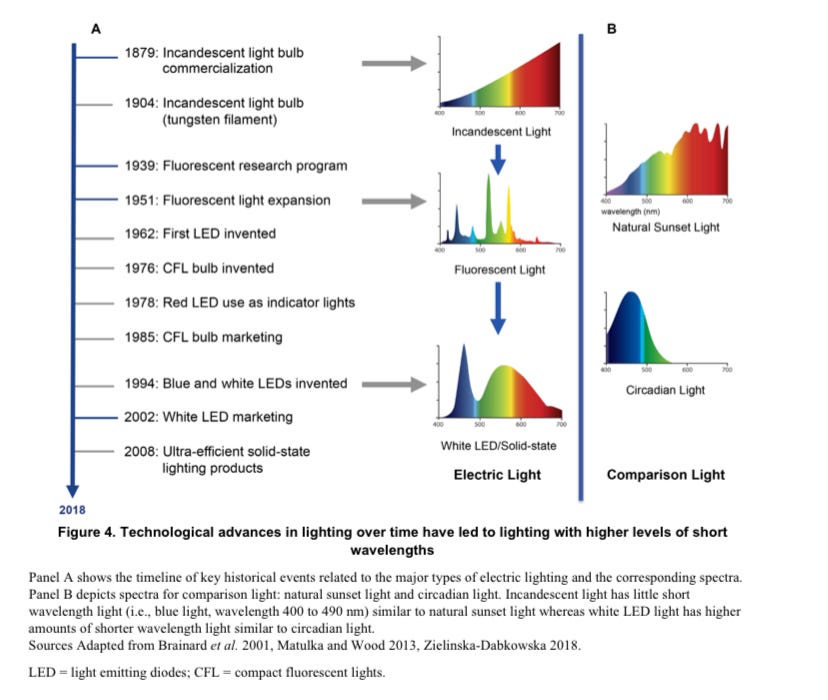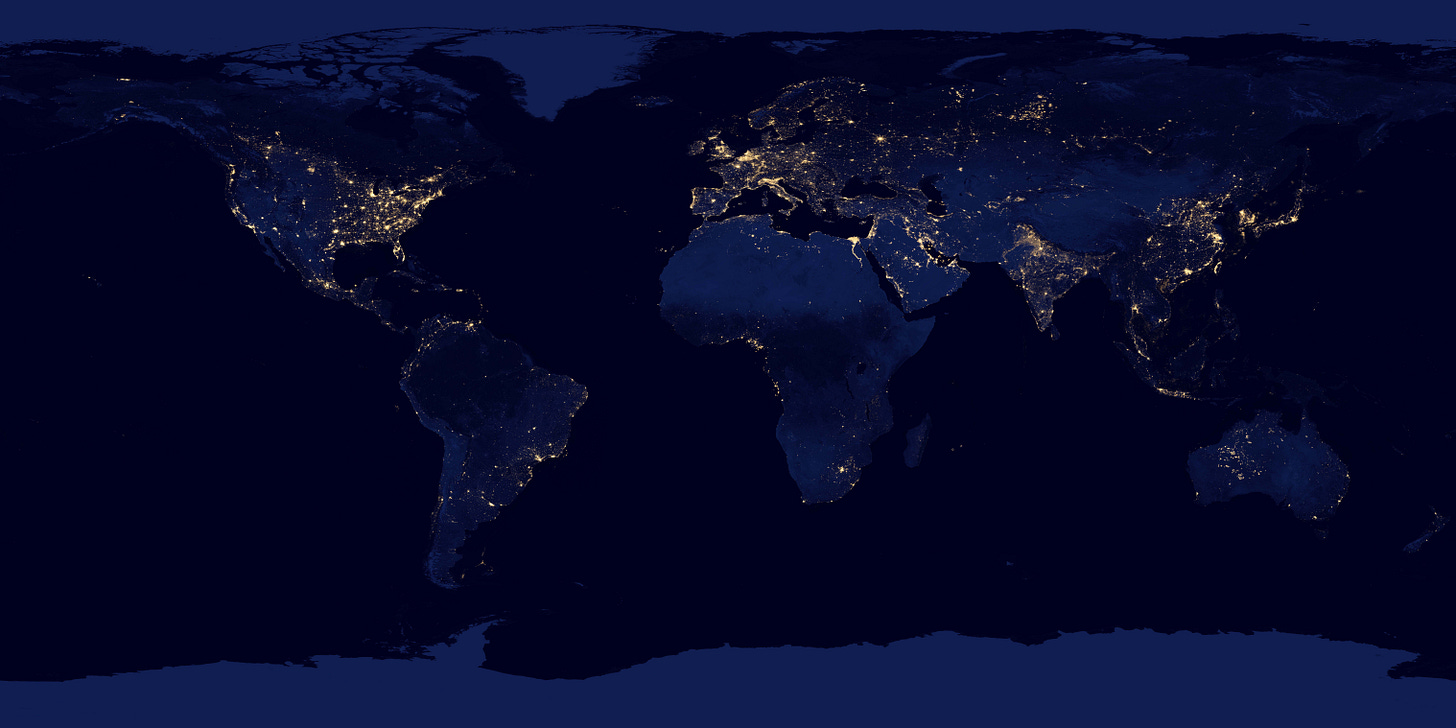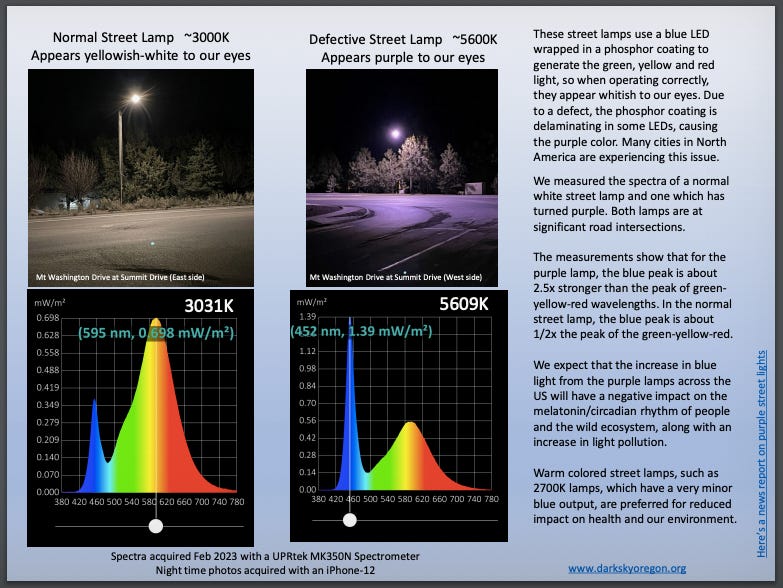Are you afraid of the dark?
Fear of the dark in adulthood, the danger of malfunctioning LED street lamps, the Dark Sky movement, and Dark Sky conference replays.
It’s easy to embrace the first half of the Brighter Days, Darker Nights equation. Brighter days are associated with optimism, goodness, and improvement.
Yet, even though both are equally part of nature, we don’t always see such positive associations when it comes to darker nights. Instead, people often use darkness to describe the bad, frightening forces that oppose the good and the light. One of the most common phrases you hear paired with dark night is "dark night of the soul." It's normal for fear of the dark to extend far past childhood.
As if you need any proof, look at the extent to which people have driven back the night. Anywhere where people gather in large numbers, they have pushed back the darkness of night.
This excess lighting is not only wasteful of energy, but harmful to people and wildlife. For example, the promise of LEDs was to reduce energy use. Instead, people added more in brightness. Now, we are learning that some of LEDs malfunction in a way that makes them even more harmful than when they were initially installed. The malfunction is causing the white street lamps to turn purple, and other colors. This purple color is even more stimulating of circadian rhythms than the white light.

Bill Kowalik & Cathie Flanigan from Dark Sky Oregon put together an analysis of these malfunctioning purple street lamps in Bend, OR. These images show the amount of light in the circadian range increasing as the lights go purple. Remember, blue/purple is the frequency that spikes cortisol and other daytime processes. When this happens, the light also halts melatonin, autophagy, and other nighttime processes. This blue and purple light does this harm to wildlife and people alike.
You can find Bill and Cathie’s entire presentation here:
More about the Dark Sky movement
All around the world, people are pushing back against the ever-increasing amount of light at night. Each year, the International Dark Sky Association hosts an online conference. Replays are available here and can help introduce the breadth of this movement. Angles on this topic range from human and wildlife health, to crime and safety, to culture and more. You can find your local chapter to get involved here. And for those of you in Oregon, here’s where you can jump straight to Dark Sky Oregon:






